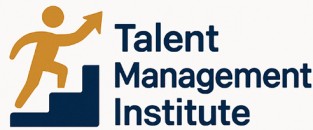
Understanding the Importance of Time Sheet Reminders
Recognizing the Role of Consistent Reminders
Effective timesheet management is pivotal in enhancing productivity and ensuring smooth payroll operations within any business. Timely submissions are not just administrative tasks; they are crucial for effective time tracking, which influences other processes like workload distribution and project billing. Consistent timesheet reminders act as catalysts that propel employees to submit their timesheets promptly. Employees often juggle multiple tasks, and without proper reminders, it becomes easy to overlook timesheet submissions. This lapse can disrupt the payroll process, skew project management data, and even hinder business decisions. For a business that uses time tracking solutions, reminders help in reducing discrepancies in time records and ensuring that employees fill their timesheets accurately. The value of reminders extends beyond administrative borders to affect workplace productivity as well. While challenges do exist in implementing these reminder systems effectively, focusing on how these integrate with overall employee engagement can provide significant insights. Furthermore, enforcing regular timesheet submissions fosters an environment where employees understand the importance of tracking their work hours accurately, leading to better time management skills. By leveraging reminder tools, businesses can make the process of submitting timesheets less daunting. Whether through email alerts, software notifications, or even creative reminders like timesheet memes, enhancing the reminder system ensures that employees know what is expected and when. Encouraging a culture where employees are proactive about their timesheets contributes to the overall health of talent management strategies. To explore more about how effective communication and skills lead to better process adherence, check this blog post on how soft skills drive engagement in talent management.Common Challenges in Implementing Time Sheet Reminders
Overcoming Common Hurdles with Time Sheet Implementation
Integrating effective time sheet reminders in the flow of a business doesn't come without its set of challenges. Identifying these issues is the first step to achieving seamless management. One significant challenge is encouraging employees to consistently submit time sheets. Without proper reminders, employees may forget to complete this task, leading to inaccuracies in payroll and a hindrance in tracking productivity.
Another hurdle is the resistance from team members who may find the process tedious. To combat this, businesses must find innovative ways to make the practice less of a chore. Using timesheet memes or implementing a reminder system that aligns with employees' work habits may provide a solution here. It's vital to choose strategies that promote engagement without contributing to burnout.
Furthermore, the issue of integrating the right tracking software can complicate things. Selecting a system that accommodates the specific needs of your business while being user-friendly for every employee is crucial. A good software should facilitate time management and improve the overall management process.
Effective communication through email or internal platforms plays a pivotal role as well. Often, the way businesses communicate the importance and expectations of filling timesheets can drastically alter their success. Messages should be clear and highlight the benefits not just for the business, but for individual employees too.
For those looking into additional solutions, it's worth exploring career opportunities to gain a broader view on the importance of accurate time tracking and employee engagement in the workplace.
Best Practices for Setting Up Time Sheet Reminders
Implementing Effective Strategies for Time Sheet Reminders
Setting up timesheet reminders effectively can greatly impact the overall efficiency of time tracking within your organization. To facilitate this, it is important to strategically integrate reminders into your time management processes.
Firstly, choosing the right tracking software is crucial for easily integrating systemized reminders. It should have features that allow for customizable notification settings—enabling you to cater reminders to specific team members. A comprehensive solution will also support multiple reminder channels like email, SMS, or internal messaging apps.
Once the software is in place, it is beneficial to establish reminders as part of a routine process. Sending timing-specific memos, perhaps mid-week and on Fridays, ensures that employees submit time-sensitive timesheets consistently. Additionally, reminders should align with payroll deadlines to avoid delays.
Adding a touch of creativity, such as employing light-hearted reminder memes, can inject some engagement into what might otherwise be perceived as a mundane task. This can help remind employees about their timesheets in a fun and relatable way.
Clear communication about reminder procedures and expectations should be part of your onboarding process, ensuring every new employee understands the importance of keeping accurate track time records. Reinforcement through regular team meetings and a strategic HR calendar can also align your team’s mindset and productivity goals.
Test different reminder intervals and formats during a free trial period to identify what works best for your business model. This approach ensures flexibility and provides a data-driven foundation from which you can efficiently manage timesheet submissions.
Leveraging Technology for Efficient Time Sheet Management
Utilizing Technology for Enhanced Time Tracking Efficiency
To streamline the time sheet process in today’s digital age, leveraging technology has become indispensable. Tracking software offers various solutions to manage time efficiently and boosts productivity among employees. Here's how businesses can make the most of these powerful tools:- Automated Reminders: Instead of manually sending reminders to team members, utilize tracking software that automatically sends emails or app notifications. This ensures employees submit their timesheets on time, reducing the burden on HR departments.
- Integration with Payroll Systems: Seamless integration with payroll software is vital. This ensures that the data from time sheets is accurately reflected in payroll calculations, reducing errors and enhancing management efficiency.
- Web-Based Platforms and Mobile Apps: Opt for time tracking software that offers flexibility through web-based platforms and mobile apps. This enables employees to track time and submit timesheets regardless of their location, thus supporting remote work arrangements.
- Analytical Insights: Advanced software provides insights into time management patterns. Analyzing metrics such as time spent on projects or overtime hours helps managers optimize workflows and improve overall productivity.
- Free Trials and Demos: Many time sheet solutions offer free trials, allowing businesses to evaluate their effectiveness before making a purchase. This trial period can also be used to familiarize employees with the software.
Engaging Employees in the Time Sheet Process
Motivating the Team to Embrace Time Tracking
Encouraging your team to actively participate in the time tracking process can significantly increase compliance and accuracy in timesheet submissions. Here are some proven strategies to engage employees:
- Clear Communication of Benefits: Regularly communicate the value of time tracking, such as its impact on more accurate forecasting, better payroll management, and recognition of employee efforts.
- Make It Simple and Accessible: Utilize user-friendly tracking software that enables employees to easily fill timesheets from any location. Opt for solutions that include a time clock feature to simplify the process and enhance accessibility.
- Incorporate Humor: Use reminder memes as a light-hearted way to remind employees to submit their timesheets. Humor can be an effective motivational tool that encourages timely submissions.
- Host Training Sessions: Offer training sessions to demonstrate how to efficiently use the timesheet and tracking software. Ensuring your team members are confident in their ability to track time and submit timesheets can ease the process.
- Incentives and Recognition: Consider implementing a system of rewards or recognition for timely submissions. This can boost team morale and motivate employees to follow through on their time management responsibilities.
Engaging employees in the timesheet process fosters a culture of accountability and can lead to increased productivity. Remind employees of the positive impacts their efforts have on the overall business, ensuring they see themselves as integral parts of the workforce strategy.
Measuring the Impact of Time Sheet Reminders on Talent Management
Assessing the Effectiveness of Time Sheet Reminder Systems
Measuring the effectiveness of time sheet reminders in talent management focuses on several key metrics. These metrics help organizations evaluate the success of their strategies related to time tracking and can provide insights on how to optimize processes over time.- Submission Rates: A primary indicator of a successful reminder system is a high percentage of employees submitting timesheets on time. Analyzing submission rates before and after reminder implementation can show direct impact.
- Accuracy of Data: Proper reminders can ensure that employees fill timesheets accurately. This involves tracking any errors in the reported work hours and comparing them over time to see improvements.
- Integration with Payroll: Efficient timesheet reminder systems should seamlessly integrate with payroll software, reducing discrepancies in employee compensation and enhancing productivity.
- Employee Feedback: Gathering feedback from team members regarding the reminder system can offer qualitative insights. Positive feedback often signals that the system reduces work stress linked with time tracking deadlines.
- Reduction in Administrative Time: Automated reminders can reduce the amount of time management teams spend on manual follow-up, freeing up resources for more strategic business activities.
- Utilization of Technology: Evaluating the effectiveness of tracking software and digital platforms in improving the timesheet reminder process is also essential. Technologies that come with features like free trial options give businesses the flexibility to assess which tool best fits their needs.













